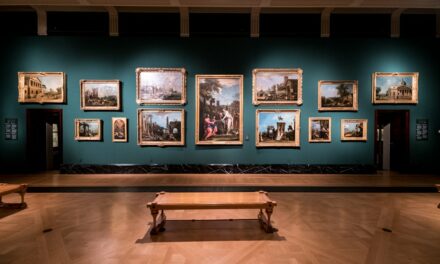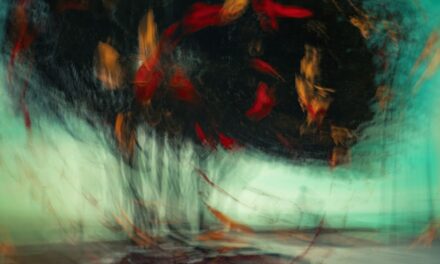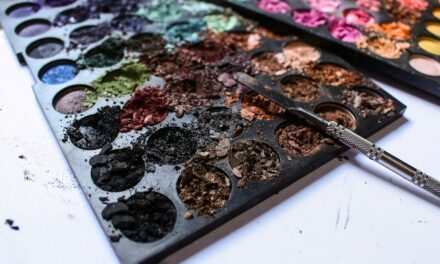Search Engine Optimisation (SEO) is a crucial aspect of establishing an online presence, particularly for artists seeking to showcase their work and connect with potential buyers or collaborators. At its core, SEO involves a series of strategies and techniques designed to enhance a website’s visibility on search engines like Google. For artists, this means ensuring that their portfolios, galleries, and personal websites appear prominently in search results when users look for art-related content.
Understanding the fundamentals of SEO can empower artists to take control of their online narrative and reach a broader audience. The digital landscape is increasingly competitive, with countless artists vying for attention. Therefore, grasping the nuances of SEO is not merely beneficial; it is essential.
Artists must recognise that their websites are not just platforms for displaying their work but also tools for communication and engagement. By optimising their sites for search engines, artists can attract visitors who are genuinely interested in their art, leading to increased opportunities for sales, commissions, and collaborations. This understanding of SEO as a vital component of an artist’s toolkit can transform how they approach their online presence.
Summary
- Understanding SEO for Artists:
- SEO is essential for artists to improve their online visibility and reach a wider audience.
- Artists should focus on creating high-quality, relevant content to improve their search engine rankings.
- Keywords and Phrases for Artists’ Websites:
- Artists should research and use relevant keywords and phrases that reflect their artwork and target audience.
- Long-tail keywords can help artists to attract more specific and interested visitors to their websites.
- Image Optimization for Artists’ Websites:
- Artists should optimize their images by using descriptive file names and alt text to improve their website’s SEO.
- Compressing images can help to improve website loading speed, which is a crucial factor for SEO.
- Creating Quality Content for Artists’ Websites:
- Artists should regularly update their websites with fresh and engaging content, such as blog posts and artist statements.
- High-quality content can help to attract and retain visitors, as well as improve search engine rankings.
- Link Building for Artists’ Websites:
- Artists can improve their website’s authority and SEO by obtaining backlinks from reputable and relevant websites.
- Guest posting and collaborating with other artists or art-related websites can help to build quality backlinks.
- Mobile Optimization for Artists’ Websites:
- Artists should ensure that their websites are mobile-friendly to improve user experience and SEO rankings.
- Mobile optimization includes responsive design, fast loading times, and easy navigation for mobile users.
- Utilizing Social Media for Artists’ Websites:
- Artists can use social media platforms to promote their artwork, drive traffic to their websites, and improve SEO.
- Engaging with followers and sharing content regularly on social media can help to improve online visibility.
- Measuring and Tracking SEO Success for Artists’ Websites:
- Artists should use tools like Google Analytics to track their website’s performance, including traffic, bounce rate, and keyword rankings.
- Monitoring SEO success can help artists to identify areas for improvement and adjust their strategies accordingly.
Keywords and Phrases for Artists’ Websites
Understanding Keyword Selection
For instance, an artist specialising in abstract painting might focus on keywords such as “abstract art”, “modern art”, or “contemporary abstract paintings”. By incorporating these keywords into their website content, artists can significantly improve their chances of being discovered by interested parties.
These can be particularly effective in attracting a targeted audience. For example, instead of simply using “art”, an artist might opt for “hand-painted abstract canvas art” or “affordable contemporary art for home decor”.
Image Optimization for Artists’ Websites
As visual creators, artists must pay special attention to image optimisation on their websites. High-quality images are essential for showcasing artwork effectively; however, they can also slow down a website if not properly optimised. Search engines favour fast-loading sites, so artists should ensure that their images are compressed without sacrificing quality.
Tools such as Adobe Photoshop or online compressors can help reduce file sizes while maintaining visual integrity. This not only improves user experience but also positively impacts SEO rankings. In addition to file size, artists should also consider the use of alt text for their images.
Alt text serves as a description of the image for search engines and visually impaired users. By including relevant keywords in the alt text, artists can further enhance their SEO efforts while providing context for their artwork. For example, instead of using generic descriptions like “painting,” an artist could write “vibrant abstract painting in blues and greens.” This practice not only aids in search engine indexing but also enriches the overall accessibility of the website.
Creating Quality Content for Artists’ Websites
Quality content is paramount in attracting and retaining visitors to an artist’s website. Beyond merely displaying artwork, artists should consider creating engaging content that tells the story behind their creations. This could include blog posts discussing their artistic process, inspirations, or even tutorials on specific techniques they employ.
Such content not only showcases the artist’s expertise but also establishes a connection with the audience, fostering a sense of community around their work. Furthermore, regularly updating content is vital for maintaining SEO rankings. Search engines favour fresh content, so artists should aim to post new articles or updates consistently.
This could involve sharing insights about upcoming exhibitions, new projects, or reflections on recent trends in the art world. By keeping the content dynamic and relevant, artists can encourage repeat visits to their site while signalling to search engines that their website is active and worth promoting.
Link Building for Artists’ Websites
Link building is another critical component of SEO that artists should not overlook. This process involves acquiring hyperlinks from other websites back to one’s own site, which can significantly enhance credibility and authority in the eyes of search engines. For artists, this could mean collaborating with bloggers or influencers in the art community who might feature their work or writing guest posts on art-related websites that link back to their own portfolio.
Additionally, artists can benefit from engaging with local galleries or art organisations that may provide opportunities for backlinks through event listings or artist profiles. By fostering relationships within the art community and seeking out these collaborative opportunities, artists can build a robust network that not only enhances their visibility but also enriches their professional connections.
Mobile Optimization for Artists’ Websites
In today’s digital age, mobile optimisation is no longer optional; it is imperative. With an increasing number of users accessing websites via smartphones and tablets, artists must ensure that their websites are mobile-friendly. A responsive design that adapts seamlessly to various screen sizes enhances user experience and keeps visitors engaged longer.
This is particularly important for artists whose work relies heavily on visual appeal; if a website does not display well on mobile devices, potential customers may quickly lose interest. Moreover, mobile optimisation also plays a significant role in SEO rankings. Search engines like Google prioritise mobile-friendly sites in their results, meaning that an artist’s website could be penalised if it does not meet these standards.
To optimise for mobile users, artists should consider simplifying navigation, ensuring fast loading times, and using larger fonts that are easy to read on smaller screens. By prioritising mobile optimisation, artists can reach a wider audience and improve their chances of converting visitors into buyers.
Utilizing Social Media for Artists’ Websites
Social media platforms offer a powerful avenue for artists to promote their work and drive traffic to their websites. By sharing images of their artwork on platforms like Instagram, Facebook, and Pinterest, artists can engage with a broader audience while directing followers back to their websites for more information or purchases. Each post serves as an opportunity to showcase creativity and personality while building a brand identity that resonates with potential buyers.
Additionally, social media allows artists to interact directly with their audience through comments and messages, fostering a sense of community around their work. This engagement can lead to increased loyalty among followers and encourage them to share the artist’s content within their networks. By leveraging social media effectively, artists can create a dynamic online presence that complements their website and enhances overall visibility.
Measuring and Tracking SEO Success for Artists’ Websites
To truly understand the effectiveness of SEO efforts, artists must engage in measuring and tracking their success over time. Tools such as Google Analytics provide valuable insights into website traffic, user behaviour, and conversion rates. By analysing this data, artists can identify which strategies are working well and which areas may require adjustment.
For instance, if certain keywords are driving significant traffic while others are not performing as expected, adjustments can be made to focus on more effective terms. Moreover, tracking metrics such as bounce rates and average session duration can offer insights into user engagement levels on the site. If visitors are leaving quickly without exploring further, it may indicate that content needs improvement or that navigation could be streamlined.
By continuously monitoring these metrics and adapting strategies accordingly, artists can refine their SEO approach over time, ensuring sustained growth in visibility and engagement within the competitive online art market. In conclusion, mastering SEO is an essential endeavour for artists looking to thrive in the digital landscape. By understanding the intricacies of keywords, image optimisation, quality content creation, link building, mobile optimisation, social media utilisation, and performance tracking, artists can significantly enhance their online presence and connect with audiences more effectively than ever before.
As the art world continues to evolve in the digital age, embracing these strategies will empower artists to share their unique visions with a global audience while fostering meaningful connections within the creative community.
For artists looking to enhance their online presence, it is crucial to understand the importance of search engine optimization (SEO) in order to maximise visibility. One related article that delves into the technical aspects of art creation is “Building Layers: Fat Over Lean Explained”. This article provides valuable insights into the process of layering in art, which can be a useful technique for artists looking to add depth and complexity to their work. Additionally, for those interested in exploring the realm of dreamscapes in art, the article “Dreamscapes in Art” offers a fascinating look at how artists can create surreal and imaginative worlds within their work. Furthermore, “Art Beyond Imagination” delves into the concept of pushing artistic boundaries and thinking outside the box to create truly unique and innovative pieces. By incorporating these insights into their practice, artists can not only improve their online visibility but also enhance the quality and creativity of their work. Source Source Source
FAQs
What is SEO and why is it important for artists?
SEO stands for Search Engine Optimization, which is the process of improving your website’s visibility on search engines like Google. For artists, SEO is important because it helps potential clients and fans find your work online, leading to increased visibility and opportunities.
What are some key SEO strategies for artists to optimize their websites?
Some key SEO strategies for artists include using relevant keywords in their website content, optimizing images with descriptive file names and alt tags, creating high-quality and shareable content, and building backlinks from reputable sources.
How can artists use social media to improve their SEO?
Artists can use social media to improve their SEO by sharing their website content and engaging with their audience. This can lead to increased website traffic, social signals that indicate quality to search engines, and potential backlinks from social media shares.
What role does website design and user experience play in SEO for artists?
Website design and user experience play a crucial role in SEO for artists. A well-designed and user-friendly website can lead to lower bounce rates, longer visit durations, and higher engagement, all of which are positive signals for search engines.
How can artists track and measure the success of their SEO efforts?
Artists can track and measure the success of their SEO efforts using tools like Google Analytics to monitor website traffic, keyword rankings, and user behaviour. They can also use SEO software to track backlinks, keyword performance, and other important metrics.



